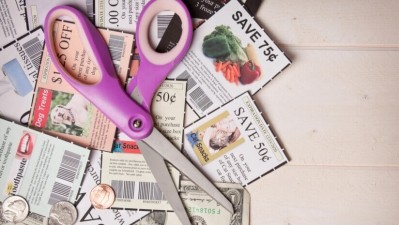2024 US presidential election
How Trump's trade, tax policies could impact food industry

Editor's note: What follows is a FoodNavigator-USA article that ran ahead of the election with updated insight following the results of the 2024 presidential election.
Presidential candidates Donald Trump and Kamala Harris are squaring off with different approaches to trade tariffs, corporate tax policies and maintaining trade partnerships.
With Donald Trump the presumptive 47th US president, the food and beverage industry is preparing for a sea change in economic and trade policies that can have a profound impact on the global food system. These changes could include:
- Tariff increases: Trump and the Republican party (GOP) ran on a platform of supporting "baseline tariffs on foreign-made goods." Trump proposed an increase of 10% or 20% on all imports coming into the US and an additional 60% tariff on Chinese imports. Recently, Trump suggested raising tariffs by 100% on Mexican imports in retaliation against immigration concerns.
- Inflation ticking up: Food and beverage prices and inflation are expected to increase with tariffs, as tariffs are “paid by US consumers and by US manufacturers” and not by foreign nations, according to the Consumer Brands Association. The Consumer Price Index ─ a measure of inflation ─ was 2.4% in September, just above the Federal Reserve Inflation rate target of 2%.
- Further trade relationship tensions: Trump will manage already-strained trade relationships with several strategic trade partners, including China. China imported $25.4 billion worth of oilseed and grains and $800 million of dairy from the US in 2022, according to the US-China Business Council.
Tariffs: ‘The bottom line is the consumer ends up paying’
Trump and the Republican (GOP) party are running on a platform that they say "will support baseline tariffs on foreign-made goods” to reduce the trade deficit. Trump is proposing a 10% or 20% tariff on all imports and an additional 60% tariff on all Chinese imports, as previously reported by Reuters.
Tariffs are designed to incentivize purchasing domestically produced goods, though consumers may experience higher food and beverage prices to offset tariffs, Stephen Nicholson, global sector strategist for grain and oilseed at Rabobank, told FoodNavigator-USA. Nicholson advised former Rep. Tom Tauke (R-Iowa) and was a commodity analyst for The Coca-Cola Co. for ten years.
“The consumer ends up paying for [tariffs]. The consumer pays a higher price for that product because that product is either protected, or there is some tariff on it," Nicholson elaborated. "People need to understand that a tariff is ... not a good thing for you because it is going to raise your price of that good or service."
The Consumer Brands Association — a trade group representing CPG companies — is similarly concerned about how more tariffs would impact companies and prices, the organization’s VP of Campaigns and Special Projects Tom Madrecki told FoodNavigator-USA.
“It is important for everyone to remember that tariffs are taxes and are not paid by foreign nations. They are paid by US consumers and by US manufacturers. So, [it is] very important to understand those two basic concepts around how tariffs work,” Madrecki said.
Despite what tariffs mean for inflation and food prices, most US consumers (56%) favor Trump’s tariffs, as Reuters/Ipsos reported in a poll of more than 1,400 registered voters.
Unpacking the tariffs of two administrations
The Trump administration enacted tariffs on thousands of goods coming from China in 2018 as part of the Section 301-Tariff Actions and Exclusion Process. China retaliated with a 15% or 25% tariff on US goods, including pork, fruit and tree nuts, according to the Congressional Research Service.
More recently, President Biden instructed trade representatives to add $18 billion of tariffs on steel, aluminum and other goods from China “to protect American workers and businesses,” according to the administration.
In 2022, the US exported to China $25.4 billion worth of oilseed and grains, $800 million of dairy products, $700 million of fruit and tree nuts, and $600 million worth of miscellaneous food, according to The US-China Business Council.
‘[Trump’s] policies seem written in stone, and [Harris’] are not’
Harris will carry forward many of the trade policies that Biden enacted during his presidency, Nicholson noted. However, economists called out Harris on the campaign trail for not providing in-depth trade proposals.
“[Trump’s] policies seem written in stone, and [Harris’] are not. And there is a lot more flexibility for things to change on her side because she has not said very much about [trade policies],” Nicholson said.
While Trump’s trade proposals are outlined, he changes his position on issues, and predicting what will be enacted if he is elected is difficult, Nicholson admitted.
“He may say one thing at 11 o'clock this morning, and then at noon today, he will say just the opposite,” Nicholson elaborated.
Harris criticized Trump’s trade policy in her 2025 agenda, noting that prices would rise for seafood, coffee, bananas and other products due to proposed new tariffs.
The US agriculture industry lost $27 billion worth of value from mid-2018 to the end of 2019 due to retaliatory tariffs China placed on US imports into China, according to the United States Department of Agriculture. The Trump administration provided financial assistance to some industries adversely impacted by Chinese tariffs, including US lobster farmers, AP News reported.
High food prices are ‘pretty sticky on the way down’
Cutting tariffs might not immediately lower food prices, since the US grows a lot of its own food and the food the US imports is more premium, Nicholson noted. High food and beverage prices tend to stay elevated even when the reason for the high prices ends, as the recent inflation cycle indicated, he added.
“We know that those prices, once they are moved upwards — for whatever reason — tend to be pretty sticky on the way down. So, to say that you would reduce a tariff by $1, and you see a $1 reduction in your price on the shelf that might be a stretch,” Nicholson elaborated.
Will Harris’ corporate tax increases reduce food, beverage investments?
Harris proposes increasing the corporate income tax to 28% from its current 21%, which the Trump administration established.
This proposed corporate tax rate increase could strain CPG companies and prevent supply-chain investments that could help lower food prices since more money will have to go to paying taxes, Madrecki explained.
“When you are increasing the cost of doing business, or you are making it harder to do business here in America, you are not helping US manufacturers. That is not helping them reinvest in their business, that is not helping lower the cost of product at the grocery store,” Madrecki said.
Is growing US isolationism a problem for the food industry?
The next president will be responsible for managing strained trade relationships, including with China and Russia, at a time when global conflicts could upend food supply chains.
US trade policies became more isolationist over the last two administrations, with both political parties supporting US protectionist policies at times, Nicholson and Madrecki said.
“What you would continue to see in both parties is increasingly protectionist policies, willingness to support tariffs and then ultimately these tariffs drive up the cost of products,” Madrecki said.
Echoing the point, Nicholson said, “[Politicians] need to back away from the rhetoric — back away from the edge of the cliff — and think about what does this mean for all of us overall. We need to be able to sell food and agricultural products to China – that is good for all of us. And there are products that we get from China that the consumer has been willing to buy, and the consumer is benefited from that by having lower costs in the store.


















